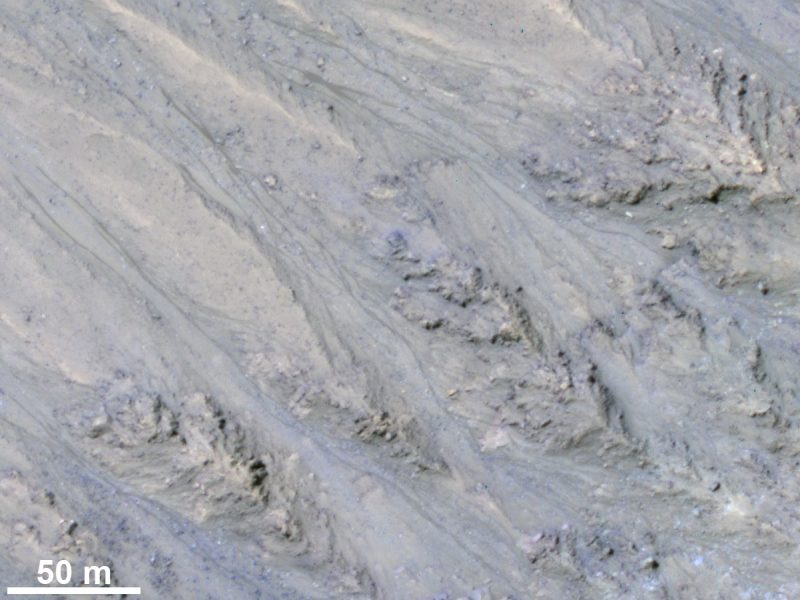
As earthlings have begun to explore Mars with our robot spacecraft in orbit and on the ground, one of the most fascinating features we’ve found are the recurring slope lineae. They can be seen on Mars as long dark streaks, which expand in the martian summertime and then retract again. They’ve been discussed as possible evidence for liquid water, seeping or flowing on Mars today. New research – published November 20, 2017 in the peer-reviewed journal Nature, now suggests this is not so. The steepness of more than 150 of these features has now been assessed with a powerful telescopic camera on NASA’s Mars Reconnaissance Orbiter. The streaks are now being interpreted as grains of sand and dust slipping downhill, rather than as ground being darkened by seeping water.
The new evidence shows the streaks exist only on slopes steep enough for dry grains to descend, much as they do on the faces of active sand dunes.

Planetary Science Institute senior scientist Jim McElwaine is a co-author on the new paper. He commented:
The recurring slope lineae on Mars behave in a similar way to laboratory experiments on Earth. What is still not understood is where the supply of fresh material comes from, though we do have some speculative ideas.
Since water means life as we know it, the finding has implications for the continuing search for life on Mars today. The scientists’ statement said:
These new findings indicate that present-day Mars may not have a significant volume of liquid water. The water-restricted conditions that exist on Mars would make it difficult for Earth-like life to exist near the surface of the planet.
U.S. Geological Survey scientist Colin Dundas, who is lead author on the new paper, confirmed:
We’ve thought of recurring slope lineae as possible liquid water flows, but they seem to act more like dry sand. This suggests that the surface of Mars is quite dry today.
Read more from Planetary Science Institute, USGS and NASA JPL.


Bottom line: The dark streaks on Mars known as recurring slope lineae are likely the result of repeated avalanches of sand and dust, rather than seeping water, new research shows.
Source: Granular flows at recurring slope lineae on Mars indicate a limited role for liquid water











